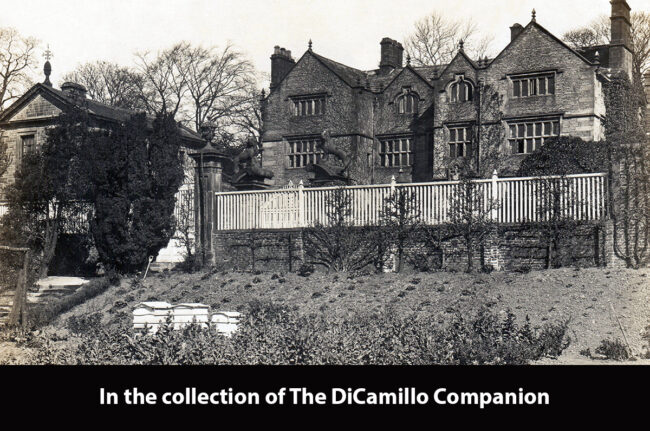
The House from a 1909 postcard
Built / Designed For: Henry Currer
House & Family History: Kildwick was built in the late medieval master mason tradition and features prominent gables and stone mullion windows built of the local millstone grit and heavy stone flags on the roof. The House became a hotel in the 20th century and was returned to private ownership as a single-family residence late in the century. Kildwick was listed for sale for £3.5 million in October 2004. The House is famous because of its likely connection with the Brontës, who lived at nearby Haworth; the House was then the seat of the Currer family, and, when Charlotte Brontë sought a nom de plume that might pass for a man's name, she chose the pseudonym of Currer Bell.
Garden & Outbuildings: The Entrance Gates, added in the late 17th century by Henry Currer, are topped by a pair of lions and feature Baroque urns on either side. Currer also built the impressive temple-like Courthouse on one side of the House. Below the House there is a semi-formal garden with arched wooden pergolas on brick piers. The owners in the late 20th century purchased The Mullions, the adjoining house, and also transformed the old Courthouse into modern office space.
Country Life: XXIX, 126 plan, 1911.
Title: Times, The (London newspaper)
Author: NA
Year Published: NA
Reference: Oct 8, 2004 Marcus Binney article
Publisher: London: Times Newspapers Ltd.
ISBN: NA
Book Type: Newspaper
House Listed: Grade II*
Park Listed: Not Listed
Past Seat / Home of: Henry Currer, 17th century; Hugh Currer, 17th century; Howarth Currer, 18th century; Richard Currer, 18th century; John Richardson-Currer; 18th century. Matthew Wilson, 19th century.
Current Ownership Type: Individual / Family Trust
Primary Current Ownership Use: Private Home
House Open to Public: No
Historic Houses Member: No